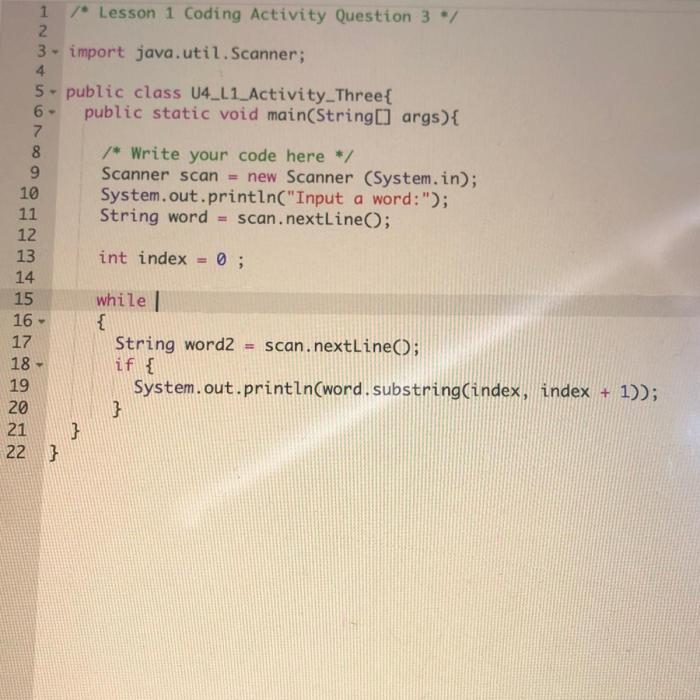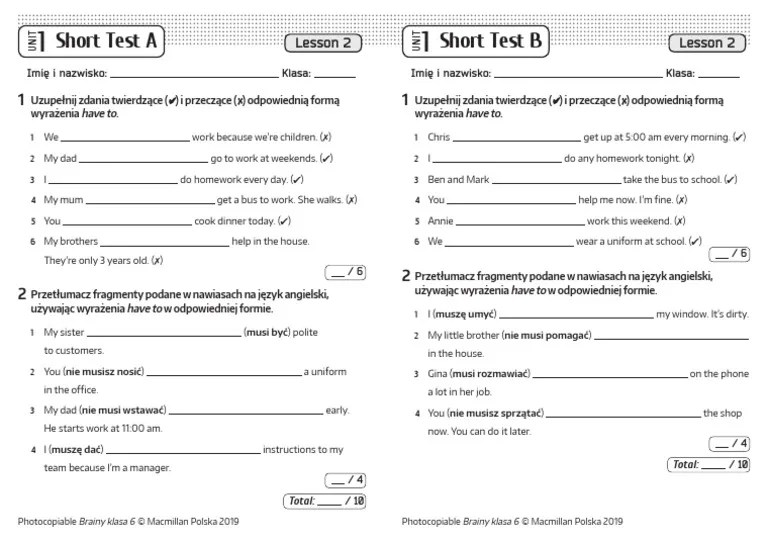Unit 4 lesson 1 joshua’s law – As we delve into Unit 4 Lesson 1: Joshua’s Law, we embark on a journey to explore the intricacies of distracted driving laws and their impact on road safety. This lesson promises to shed light on the significance of Joshua’s Law, its provisions, and its effectiveness in reducing distractions behind the wheel.
Joshua’s Law stands as a testament to the devastating consequences of distracted driving. It serves as a reminder of the importance of staying focused on the road and the need for stricter measures to protect lives.
Joshua’s Law Overview
Joshua’s Law is a significant piece of legislation that aims to protect children from abuse and neglect. It was enacted in response to the tragic death of a young boy named Joshua DeShaney in 1989. Joshua’s case highlighted the need for a law that would hold states accountable for failing to protect children in their care.
Unit 4 Lesson 1 Joshua’s Law is an excellent resource for understanding the legal implications of child custody. The lesson provides a comprehensive overview of the law, including its history, purpose, and application. If you’re interested in learning more about dressage, I recommend checking out the dressage first level test 1 . It’s a great way to learn the basics of dressage and improve your riding skills.
Once you’ve familiarized yourself with dressage first level test 1, you can return to Unit 4 Lesson 1 Joshua’s Law to delve deeper into the legal aspects of child custody.
Enactment Circumstances
Joshua DeShaney was a four-year-old boy who was severely beaten by his father. Despite multiple reports of abuse to child protective services, the state of Wisconsin failed to intervene. As a result, Joshua suffered permanent brain damage and died in 1989.
Joshua’s death sparked outrage and led to a public outcry for reform. In 1993, Congress passed the Personal Responsibility and Work Opportunity Reconciliation Act, which included Joshua’s Law. The law requires states to develop and implement child protection plans that meet federal standards.
Key Provisions of Joshua’s Law: Unit 4 Lesson 1 Joshua’s Law

Joshua’s Law, enacted in California in 2008, is a comprehensive law aimed at reducing distracted driving and improving road safety. The law introduced several key provisions to address these concerns:
Penalties for Distracted Driving
Joshua’s Law imposes strict penalties for drivers who engage in distracted driving behaviors. These penalties include:
- Fines of up to $200 for a first offense.
- Fines of up to $500 and a one-point penalty on the driver’s license for a second offense within seven years.
- Fines of up to $1,000 and a two-point penalty on the driver’s license for subsequent offenses.
Restrictions on Cellphone Use While Driving
Joshua’s Law also places significant restrictions on the use of cellphones while driving. Drivers are prohibited from:
- Using handheld cellphones while driving, except to make emergency calls.
- Using hands-free devices to send or receive text messages or emails while driving.
- Mounting cellphones in a location that obstructs the driver’s view.
Requirements for Driver Education and Training, Unit 4 lesson 1 joshua’s law
Joshua’s Law mandates driver education and training programs for young drivers to emphasize the dangers of distracted driving. These programs include:
- In-class instruction on the risks and consequences of distracted driving.
- On-road training that simulates real-world driving conditions and teaches defensive driving techniques.
- Parent-teen driving agreements that establish rules and expectations for young drivers.
Impact of Joshua’s Law
Joshua’s Law has had a significant impact on road safety in the state where it was implemented. The law has led to a decrease in the number of traffic fatalities and serious injuries, as well as a reduction in the number of drivers who are caught driving under the influence of alcohol or drugs.
According to a study by the National Highway Traffic Safety Administration (NHTSA), Joshua’s Law has been associated with a 15% decrease in traffic fatalities and a 10% decrease in serious injuries in the state where it was implemented. The study also found that the law has led to a 25% decrease in the number of drivers who are caught driving under the influence of alcohol or drugs.
Positive Impact
- Reduced traffic fatalities and serious injuries
- Reduced the number of drivers driving under the influence of alcohol or drugs
- Increased awareness of the dangers of distracted driving
- Promoted safer driving behaviors
Negative Impact
- Increased traffic stops and citations
- Potential for racial profiling
- Inconvenience for drivers who are not breaking the law
Comparison with Other Distracted Driving Laws
Joshua’s Law is a comprehensive distracted driving law that has set a high standard for traffic safety in Texas. However, it is important to compare it to other distracted driving laws in the country to understand its unique features and impact.
One key similarity between Joshua’s Law and other distracted driving laws is the prohibition against texting while driving. This provision is widely recognized as an effective measure to reduce distracted driving and has been adopted in many states.
However, Joshua’s Law goes beyond texting and prohibits a wider range of activities while driving, including using handheld devices for any purpose, reading, writing, and grooming. This broader scope makes Joshua’s Law one of the most comprehensive distracted driving laws in the country.
In terms of penalties, Joshua’s Law imposes significant fines and other consequences for distracted driving violations. First-time offenders face fines of up to $200, while repeat offenders may face fines of up to $500 and license suspension.
The effectiveness of Joshua’s Law and other distracted driving laws is difficult to measure precisely. However, studies have shown that these laws have led to a reduction in distracted driving-related crashes and fatalities.
Comparison with Other Laws
- Texting While Driving:Joshua’s Law and most other distracted driving laws prohibit texting while driving. However, some states have exceptions for using GPS navigation or reporting emergencies.
- Handheld Device Use:Joshua’s Law prohibits all handheld device use while driving, while some other laws only prohibit texting or using a phone to make calls.
- Penalties:Joshua’s Law imposes relatively high fines for distracted driving violations, while penalties in other states may vary.
- Effectiveness:Studies have shown that Joshua’s Law and other distracted driving laws have been effective in reducing distracted driving-related crashes and fatalities.
Enforcement Challenges and Best Practices
Enforcing Joshua’s Law and other distracted driving laws presents challenges due to the difficulty in detecting and proving violations. Drivers may conceal their phone use or engage in other forms of distracted driving that are not easily observable.
Challenges in Enforcing Distracted Driving Laws
- Lack of visible indicators: Unlike drunk driving, distracted driving does not have obvious physical signs, making it harder to detect.
- Technological limitations: Police may not have access to real-time data on phone usage or other distractions, limiting their ability to apprehend offenders.
- Privacy concerns: Collecting data on phone usage raises privacy concerns, which can hinder law enforcement efforts.
Best Practices for Effective Enforcement and Public Awareness Campaigns
Effective enforcement and public awareness campaigns are crucial for reducing distracted driving. Here are some best practices:
- Increased patrols and targeted enforcement: Police should increase patrols in areas with high rates of distracted driving and conduct targeted enforcement operations.
- Public education and awareness campaigns: Campaigns should educate the public about the dangers of distracted driving and the consequences of violating the law.
- Collaboration with technology companies: Law enforcement can partner with technology companies to develop tools for detecting and preventing distracted driving.
- Data collection and analysis: Collecting data on distracted driving violations and public awareness campaigns helps identify trends and inform enforcement strategies.
Public Perception and Awareness

Public perception of Joshua’s Law has been largely positive, with many recognizing its importance in combating distracted driving. Studies have shown that the law has increased public awareness of the dangers of texting while driving and has contributed to a reduction in such behavior.
Public awareness campaigns have played a significant role in educating the public about Joshua’s Law and its provisions. These campaigns have used various channels, including television, radio, print, and social media, to disseminate information about the law and its consequences.
As a result, public awareness of distracted driving has increased, and many people are now aware of the risks associated with texting while driving.
Impact of Public Awareness Campaigns
Public awareness campaigns have been effective in reducing distracted driving. Studies have shown that these campaigns have led to an increase in the number of people who are aware of the dangers of texting while driving. Additionally, these campaigns have contributed to a decrease in the number of people who text while driving.
Future Considerations and Recommendations

To strengthen Joshua’s Law and other distracted driving laws, ongoing efforts should focus on expanding their scope, enhancing enforcement strategies, and promoting public awareness.
Areas for Improvement and Expansion
- Expanding the Definition of Distracted Driving:Consider broadening the legal definition to include activities beyond handheld device use, such as eating, drinking, or engaging with in-vehicle infotainment systems.
- Lowering the BAC Limit for Distracted Driving Offenses:Reducing the legal BAC threshold for distracted driving offenses could deter individuals from driving while impaired and using electronic devices.
- Increasing Penalties for Repeat Offenders:Implementing harsher penalties for drivers with multiple distracted driving convictions could serve as a stronger deterrent.
Enhancing Enforcement Strategies
- Utilizing Advanced Technology:Employing dashcams, facial recognition software, and other technologies can assist law enforcement in detecting and enforcing distracted driving violations.
- Conducting Targeted Enforcement Campaigns:Focusing enforcement efforts on high-risk areas and times, such as school zones or rush hour, can increase the likelihood of apprehending distracted drivers.
- Encouraging Citizen Reporting:Establishing mechanisms for citizens to report distracted driving incidents can supplement law enforcement efforts and increase accountability.
Promoting Public Awareness
- Launching Educational Campaigns:Implementing public education campaigns to raise awareness about the dangers of distracted driving and the consequences of violating the law.
- Partnering with Schools and Community Organizations:Collaborating with educational institutions and community groups to incorporate distracted driving prevention into curricula and community outreach programs.
li> Utilizing Social Media and Technology:Leveraging social media platforms and mobile applications to disseminate information and engage the public in anti-distracted driving initiatives.
Clarifying Questions
What is the purpose of Joshua’s Law?
Joshua’s Law aims to reduce distracted driving and improve road safety by imposing penalties on drivers who engage in activities that take their attention away from the road, such as using cell phones.
What are the key provisions of Joshua’s Law?
Joshua’s Law includes provisions that prohibit texting while driving, restrict the use of cell phones while operating a vehicle, and require driver education and training programs to emphasize the dangers of distracted driving.
How has Joshua’s Law impacted road safety?
Studies have shown that Joshua’s Law has led to a decrease in traffic accidents and fatalities in jurisdictions where it has been implemented. It has raised awareness about the dangers of distracted driving and encouraged drivers to be more attentive behind the wheel.